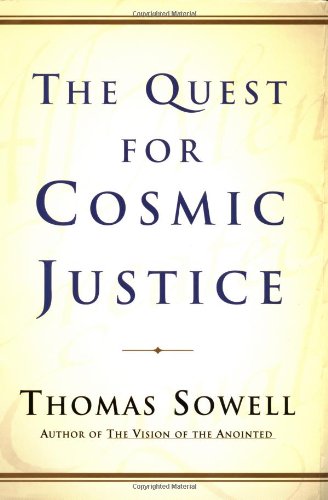A Brief Book Summary from Books At a Glance
By Benjamin Montoya
Editor’s Note: With this “Bonus” Book Summary we continue our series on culturally- and Politically-oriented studies that are of contemporary relevance. We hope you enjoy!
About the Author
Thomas Sowell has taught economics at Cornell, UCLA, Amherst, and other academic institutions, and his Basic Economics has been translated into six languages. He is currently a scholar in residence at the Hoover Institution, Stanford University.
Introduction
Terms like “social justice” and “equality” are common terms in our society. But did you know that there is currently a movement to seek to enforce a certain socialistic understanding of justice? Do you know the consequences and the means they use to achieve it? Do you also know that if this movement is successful, that it will essentially repeal all the freedoms gained through the American Revolution? Consider reading this important book that helps us understand the seriousness of seeing this tyrannical sense of justice come to fruition.
Contents
Chapter I: The Quest for Cosmic Justice
Chapter II: The Mirage of Equality
Chapter III: The Tyranny of Visions
Chapter IV: The Quiet Repeal of the American Revolution
Chapter I: The Quest for Cosmic Justice
The term “social justice” is one that is common today as it has ben for some time. The difficulty with this term is that people mean different things by it. There is a traditional definition that insists that social justice be administered socially in the sense of using the law to ensure justice for all. The primary emphasis is placed on impartial processes for all.
The second way people use this term is in the sense of a cosmic justice. This definition claims that people must experience equality in terms of their wages and goods they have. Theirs is a perspective that can be known as socialism. Their primary emphasis is on the results or prospects for everyone. This position on social justice is probably best known as anti-social justice because the costs that the society fills often gets ignored.
Seeking cosmic justice is problematic for several reasons, but the primary reason is that it brings along with it several unintended consequences. The way that this kind of justice happens is that it is enforced aggressively by those in power. There have been plenty of awful examples of this throughout history in socialistic contexts.
Those who seek cosmic justice also have painted some groups in too broad of strokes. They claim that some people are disadvantaged to no fault of their own. The difficulty in maintaining this position is that it is hard to prove. It is almost impossible to lump people together without taking each situation on a case-by-case basis.
Seeking cosmic justice also ignores the benefits of rewarding productivity. Socialism kills productivity because it removes economic incentives for increased output. There is little to nothing to encourage people in this way given the affects. That is why this system has never worked—not once.
Furthermore, a quest for cosmic justice often ignores other historical factors that influence the way things go and why some people have things and others do not. When doing history, we have to be careful not to see it in such a broad way without understanding the particulars of each time period and how each period may have differed significantly from what we understand today. When it comes to social justice, the cosmic justice group tends to draw abstractions for certain groups within society throughout generations without considering the specifics of each time period.
Those who seek cosmic justice also paint society only in terms of the extreme points. The media will speak of the richest and the poorest of society. Did you know that those two groups combined comprise no more than 10% of the entire society? Let that sink in for a moment. People seeking cosmic justice are trying to enforce their views in light of a small segment of society. That does not mean that these smaller segments are not important. But when the media discusses these groups as their primary focus to encourage people to adopt their vision of cosmic justice, they do not do justice to society.
“There is an ancient fable about a dog with a bone in his mouth. He looked down into a pool of water and saw a reflection that looked to him like another dog with another bone—and that other bone seemed to be larger than his bone. Determined to get the other bone instead, the dog opened his mouth and prepared to jump into the water. This of course caused his own bone to drop into the water and be lost. Cosmic justice is much like that illusory bone and it too can cause us to lose what is attainable in quest of the unattainable.” We ought not to make the same mistake of the dog in the fable by allowing people who seek cosmic justice to leave us all with the same fate.
Chapter II: The Mirage of Equality
As mentioned in the last chapter, people who seek cosmic justice against traditional notions of justice do so on the basis of their understanding of equality. That understanding involves a redistribution of wealth from the rich to the poor so that there is some sense of equality in terms of what everyone owns. Is that really equality? As it turns out, this vision of equality is no more than a mirage in the desert.
This kind of equality does not account for the differences that people face growing up within the same household. One child may have special needs and require a special education program; the other may be gifted intellectually and need to be challenged. Would someone really begin to argue inequality on the part of either child because things turned. . .
[To continue reading this summary, please see below....]The remainder of this article is premium content. Become a member to continue reading.
Already have an account? Sign In
